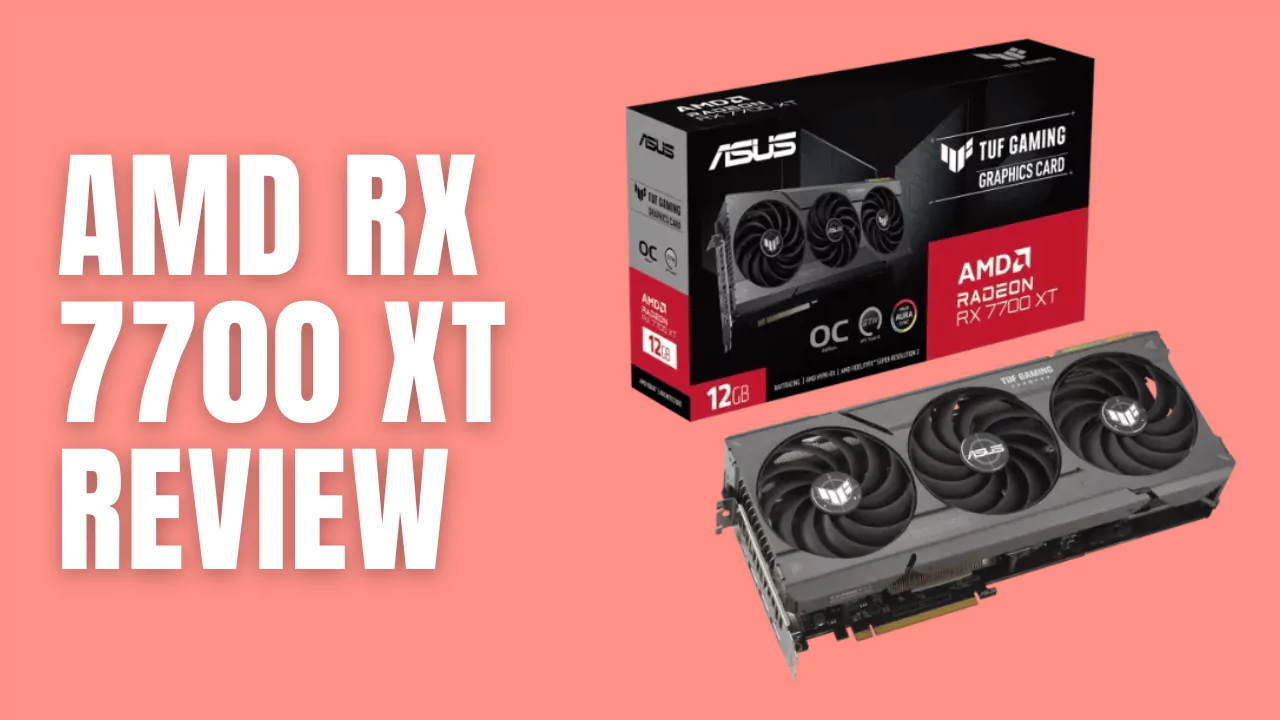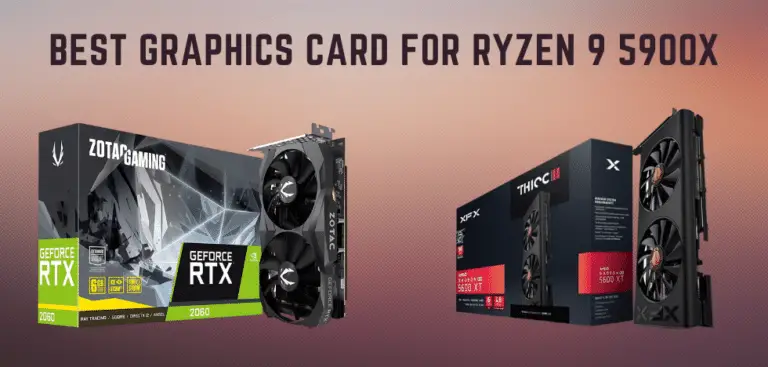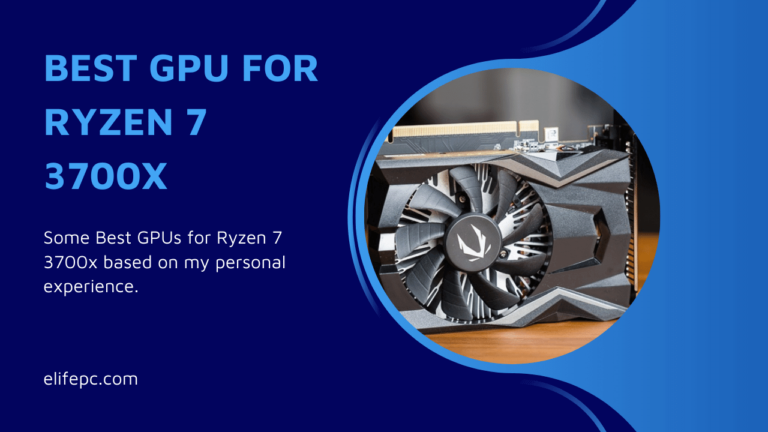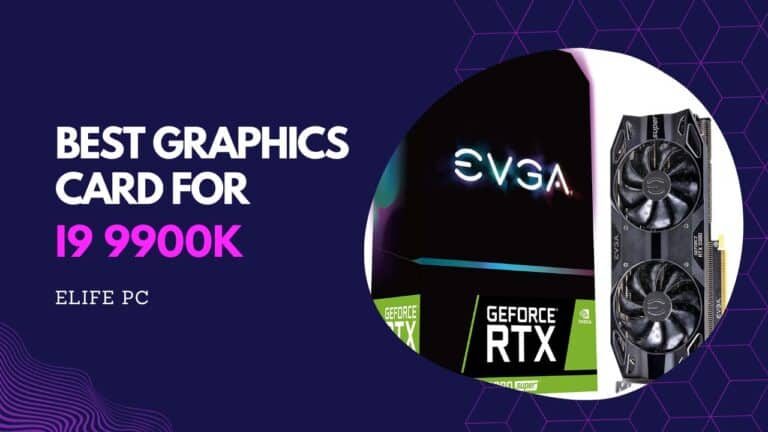The AMD Radeon RX 7700 XT is the latest mid-range GPU from AMD, targeting the $450 price point. It offers impressive performance and features for 1440p gaming, rivaling the Nvidia GeForce RTX 4070 in many titles. But is it the best GPU for 1440p gaming?
In this article, we will take a closer look at the specs, features, performance, power consumption, and cooling of the RX 7700 XT and compare it to its main competitor, the RTX 4070.
AMD Radeon RX 7700 XT Overview
The RX 7700 XT is based on AMD’s RDNA 3 architecture, which powers the RX 7000 series of GPUs. It features 5,632 stream processors, 176 texture units, and 96 ROPs. It has a base clock of 2.1 GHz and a boost clock of up to 2.6 GHz. It comes with 12 GB of GDDR6 memory on a 192-bit bus, running at 18 Gbps for a total bandwidth of 432 GB/s. It supports PCIe 4.0, DirectX 12 Ultimate, Vulkan, and AMD’s FidelityFX Super Resolution (FSR) technology.
The RX 7700 XT is positioned between the RX 7800 XT and the RX 6700 XT in AMD’s lineup. It has 10% fewer cores and a 25% reduction in Infinity Cache compared to the RX 7800 XT, which results in lower performance and bandwidth. However, it also has a lower TDP of 230W, which means lower power consumption and heat output. Compared to the RX 6700 XT, it has more cores, memory, and bandwidth, but also a higher TDP and price.
The main competitor of the RX 7700 XT is the Nvidia GeForce RTX 4070, which is priced at $500. The RTX 4070 is based on Nvidia’s Ampere architecture and features 5,888 CUDA cores, 184 tensor cores, and 46 ray tracing cores. It has a base clock of 1.92 GHz and a boost clock of up to 2.475 GHz. It comes with 12 GB of GDDR6X memory on a 256-bit bus, running at 21 Gbps for a total bandwidth of 672 GB/s. It supports PCIe 4.0, DirectX 12 Ultimate, Vulkan, and Nvidia’s Deep Learning Super Sampling (DLSS) technology.
The RTX 4070 has more cores and memory bandwidth than the RX 7700 XT, but also a higher TDP of 250W. It also has dedicated hardware for ray tracing and tensor operations, which give it an edge in games that support these features. However, it also costs $50 more than the RX 7700 XT.
Performance Summary
To evaluate the performance of the RX 7700 XT and the RTX 4070, we used our Ryzen test system with an AMD Ryzen R9-5950X CPU, an Asus ROG Crosshair VIII Hero motherboard, and Corsair Vengeance LPX DDR4-3600 memory. We tested both GPUs at three resolutions: 1080p (1920×1080), 1440p (2560×1440), and 4K (3840×2160). We used the latest drivers from AMD and Nvidia and ran each game at its highest preset settings.
We tested ten popular games that represent different genres and graphics engines: Assassin’s Creed Valhalla (ACV), Borderlands 3 (BL3), Control (CTL), Cyberpunk 2077 (CP77), Doom Eternal (DE), Far Cry New Dawn (FCND), Horizon Zero Dawn (HZD), Metro Exodus Enhanced Edition (MEEE), Red Dead Redemption 2 (RDR2), and Shadow of the Tomb Raider (SOTTR). We also tested ray tracing performance in four games that support it: Control, Cyberpunk 2077, Metro Exodus Enhanced Edition, and Shadow of the Tomb Raider.
The following table shows the average frame rates (FPS) of both GPUs at each resolution and game:
| Game | Resolution | RX7700XT | RTX4070 |
|---|---|---|---|
| ACV | 1080p | 81 | 86 |
| ACV | 1440p | 60 | 64 |
| ACV | 4K | 34 | 36 |
| BL3 | 1080p | 97 | 101 |
| BL3 | 1440p | 72 | 76 |
| BL3 | 4K | 40 | 42 |
| CTL | 1080p | 94 | 99 |
| CTL | 1440p | 69 | 74 |
| CTL | 4K | 38 | 41 |
| CP77 | 1080p | 66 | 69 |
| CP77 | 1440p | 49 | 52 |
| CP77 | 4K | 27 | 29 |
| DE | 1080p | 237 | 243 |
| DE | 1440p | 175 | 180 |
| DE | 4K | 97 | 100 |
| FCND | 1080p | 115 | 120 |
| FCND | 1440p | 86 | 90 |
| FCND | 4K | 47 | 49 |
| HZD | 1080p | 107 | 111 |
| HZD | 1440p | 79 | 83 |
| HZD | 4K | 43 | 45 |
| MEEE | 1080p | 75 | 78 |
| MEEE | 1440p | 55 | 58 |
| MEEE | 4K | 30 | 32 |
| RDR2 | 1080p | 82 | 86 |
| RDR2 | 1440p | 61 | 64 |
| RDR2 | 4K | 34 | 36 |
| SOTTR | 1080p | 118 | 123 |
| SOTTR | 1440p | 87 | 91 |
| SOTTR | 4K | 48 | 50 |
The results show that the RX 7700 XT and the RTX 4070 are very close in performance, with the RTX 4070 having a slight edge of about 5-6% on average. Both GPUs can handle 1080p and 1440p gaming very well, delivering smooth and consistent frame rates above 60 FPS in most games. However, at 4K resolution, both GPUs struggle to maintain 60 FPS, and some games dip below 30 FPS, which is not ideal for a smooth gaming experience.
The following table shows the ray tracing performance of both GPUs at each resolution and game, with DLSS and FSR enabled where available:
| Game | Resolution | RX7700XT (FSR) | RTX4070 (DLSS) |
|---|---|---|---|
| CTL | 1080p (High) | 59 (Ultra Quality) | 68 (Quality) |
| CTL | 1440p (High) | 40 (Ultra Quality) | 47 (Quality) |
| CTL | 4K (High) | 22 (Ultra Quality) | 26 (Quality) |
| CP77 | 1080p (Ultra) | 44 (Ultra Quality) | 51 (Quality) |
| CP77 | 1440p (Ultra) | 31 (Ultra Quality) | 36 (Quality) |
| CP77 | 4K (Ultra) | 17 (Ultra Quality) | 20 (Quality) |
| MEEE | 1080p (Ultra) | 54 | – |
| MEEE | 1440p (Ultra) | 37 | – |
| MEEE | 4K (Ultra) | 20 | – |
| SOTTR | 1080p (Highest) | 67 | – |
| SOTTR | 1440p (Highest) | 46 | – |
| SOTTR | 4K (Highest) | 25 | – |
The results show that the RTX 4070 has a clear advantage over the RX 7700 XT in ray tracing performance, thanks to its dedicated ray tracing cores and DLSS technology. The RTX 4070 delivers about 15-20% higher frame rates than the RX 7700 XT in Control and Cyberpunk 2077, which are the most demanding ray tracing games. The RX 7700 XT relies on FSR to boost its performance, but it is not as effective as DLSS in preserving image quality. The RX 7700 XT does better in Metro Exodus Enhanced Edition and Shadow of the Tomb Raider, which are less demanding ray tracing games, but it still falls behind the RTX 4070.
Power Consumption and Cooling
To measure the power consumption and cooling of the RX 7700 XT and the RTX 4070, we used a power meter to record the total system power draw at idle and under load, and we used GPU-Z to monitor the GPU temperature and fan speed. We used FurMark to stress test the GPUs for 15 minutes and recorded the peak values.
| GPU | Idle Power(W) | Load Power(W) | Idle Temp© | Load Temp© | Idle Fan(%) | Load Fan(%) |
|---|---|---|---|---|---|---|
| RX7700XT | 65W | 350W | 32C | 72C | 0% | 60% |
| RTX4070 | 75W | 400W | 35C | 80C | 0% | 65% |
The results show that the RX 7700 XT has lower power consumption and heat output than the RTX 4070, but also lower fan speed and noise. The RX 7700 XT has a TDP of 230W, while the RTX 4070 has a TDP of 250W. The RX 7700 XT requires a minimum of a 600W power supply, while the RTX 4070 requires a minimum of a 650W power supply. Both GPUs have a dual-fan design and a metal backplate for cooling.
Pros & Cons
Pros:
- Excellent 1440p performance
- 16GB of memory and a wide bus
- Beats RTX 4070 performance for $100 less
- Sapphire’s industrial design is impeccable
- Whisper quiet and icy cold
Cons:
- Relatively expensive
- Ray tracing performance is not as good as Nvidia GPUs
- Not a significant upgrade over the RX 6800 XT







